In the Fall of 2021, the Center for Pollinator Research/Insect Biodiversity Center collaborated with the Department of Graphic Design to develop ideas for projects to increase engagement and educational experiences at the Pollinator and Bird Garden at the Arboretum at Penn State.
Professor Ryan Russell focused the projects in his course, GD301: Experience Design Process + Methods, on this topic. Guidance on pollinator biology, ecology, management and conservation, and the unique features provided by the Arboretum, was provided by Professor Harland Patch, the Director of Pollinator Programming at the Arboretum. Teams of two undergraduate students worked together to develop a unique user experience, that actively markets and promotes the "hidden world of the Arboretum." Each group first identified a specific target demographic, developed the necessary and appropriate user scenarios, and designed subsequent deliverables, that engage the audience within that physical location and create a meaningful digital (and non-digital) experience for audiences. In total, 7 projects were designed, which included graphical displays, collectible cards, and books to enhance learning about pollinators and encourage action on pollinator conservation, games to learn about the behaviors and ecological roles of different pollinators, and a program to view the garden through the eyes of pollinators, to better understand how different species experience the garden. These projects were funded by the Apes Valentes Program through the Center for Pollinator Research. This program was made possible through the generous donations of an anonymous donor.
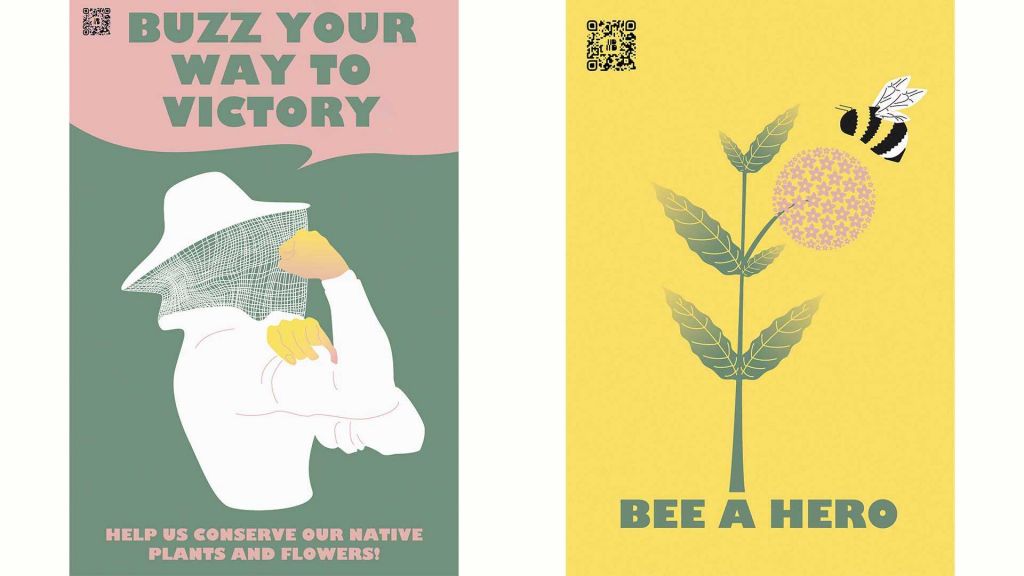
Sarah Armstrong & Jane Yun
Our solution in enhancing the Penn State Arboretum experience was to create a petition signing event throughout the month of September. The event will be centered around promoting the cultivation of pollinator friendly plants so that we can take the ideal pollinator world from the Arboretum and expand it to areas outside. The images represent posters that will be placed around campus, with QR codes to direct individuals to the event. Some of the posters have augmented reality movements which can be viewed through phone or tablet.
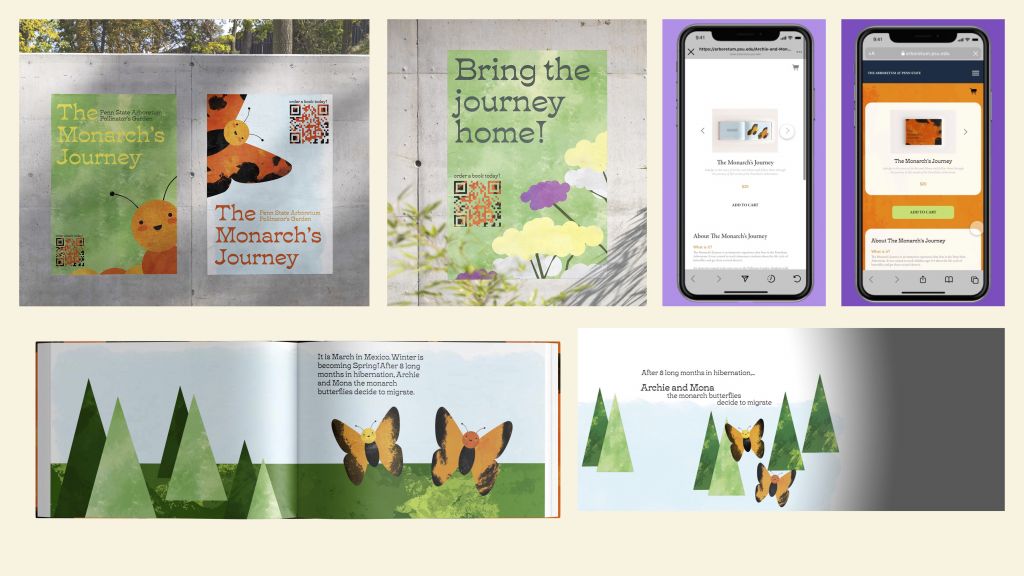
Emma Swayze & Clare Connell
This project was in collaboration with the Penn State Arboretum, which gave us the amazing opportunity to create meaningful deliverables and experiences to engage an audience and excites them about what the pollinator garden has to offer. The project was very open-ended, each group had to create meaningful deliverables to answer to a problem they also created. Drawing from our inspiration of the butterflies in the pollinator garden and our interest in engaging a young audience, we created a narrative to teach young children about the Monarch Butterfly’s lifecycle. We started by writing and illustrating a children’s book and from there, we expanded upon the characters we created to develop a rich and expansive set of assets.
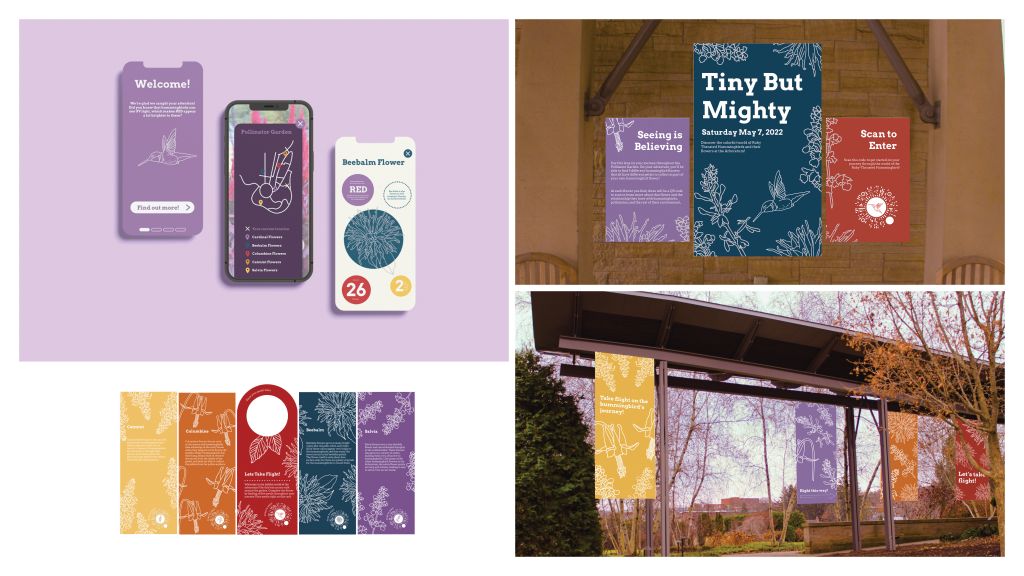
Shelby Stewart & Taylor Gunnells
This project is an immersive experience that allows children and families to learn more about hummingbirds and their environment. There are a series of posters that lead audiences into the Arboretum and around the Pollinator Garden to show visitors the flowers that hummingbirds are attracted to. Visitors have the opportunity to receive a collectible card at each of the five flower stations and each card includes information about the flower and a QR code. The QR code leads visitors to a website that teaches the user more about hummingbirds and each of the flowers the hummingbirds visit.
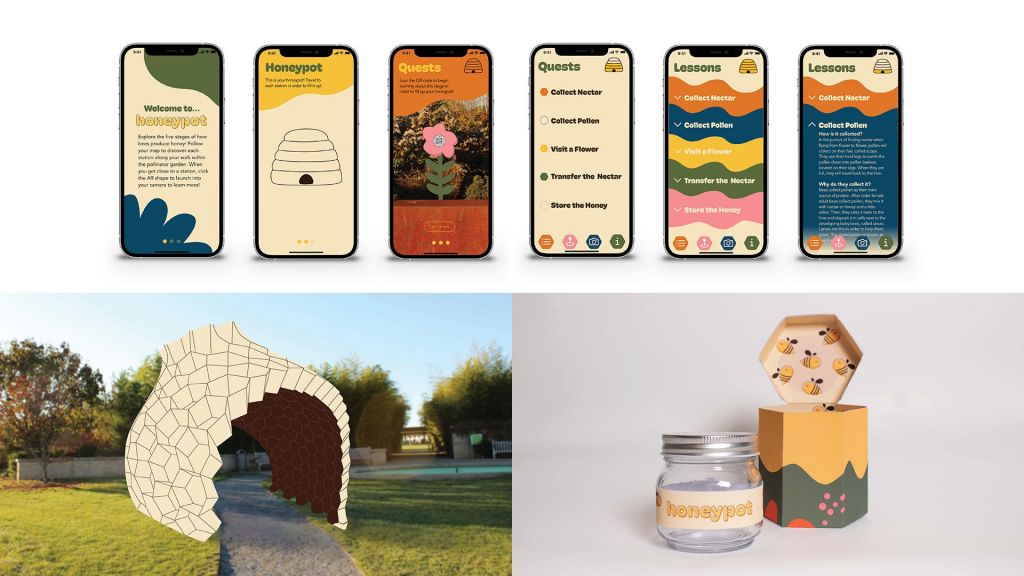
Taylor Kuszyk & Rachel Smith
"Honeypot" is an immersive, educational experience that walks our targeted demographic through the process of how bees make honey. This experience is a celebratory, daylong event that takes place within the Pollinator Garden at the Arboretum at Penn State. The “Honeypot” game sends the player on different quests which guide them to different sites in the garden, where augmented reality features help link the surroundings to the different lessons. As the player completes different quests and learn different lessons, they gain points. Upon completion of the game, the player can obtain a honey jar as a reward from Center for Pollinator Research members.
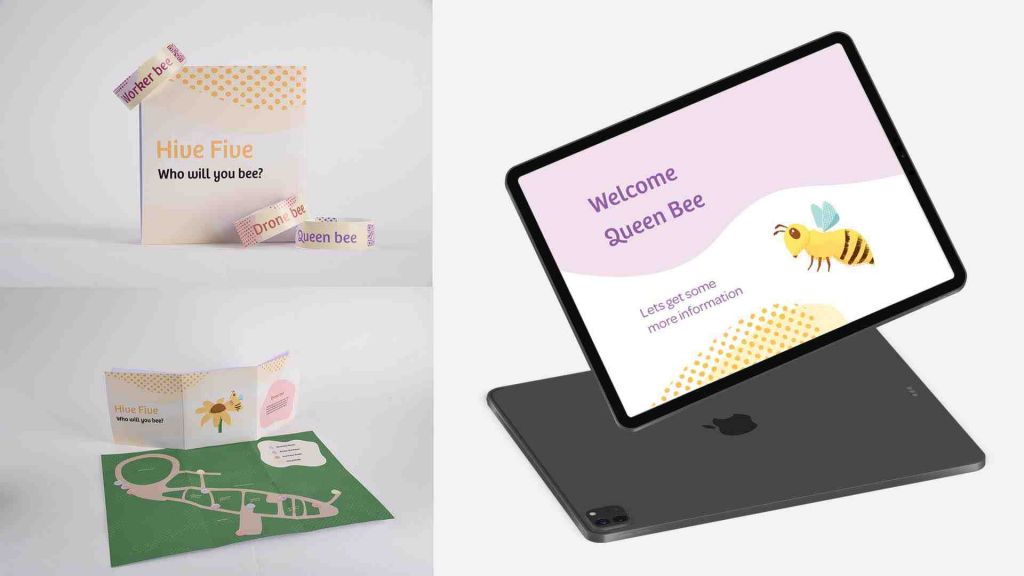
Aeva Roth & Kimi Mate
Our solution, Hive Five, includes an interactive kiosk experience where users (elementary school students) can choose one of three bee journeys to follow. Upon entry of the garden, users pick up a map and a bracelet that corresponds to one of the three bee types. The bracelets are scanned at the beginning of the experience to personalize the user’s bee and upon arrival at each following kiosk. After the bracelet is scanned at a kiosk, the user reads information and completes a task, such as a quiz or game. As users complete the tasks, they earn points which are totaled at the end. Once the user has finished their journey, they have the opportunity to see their name on the leaderboard.
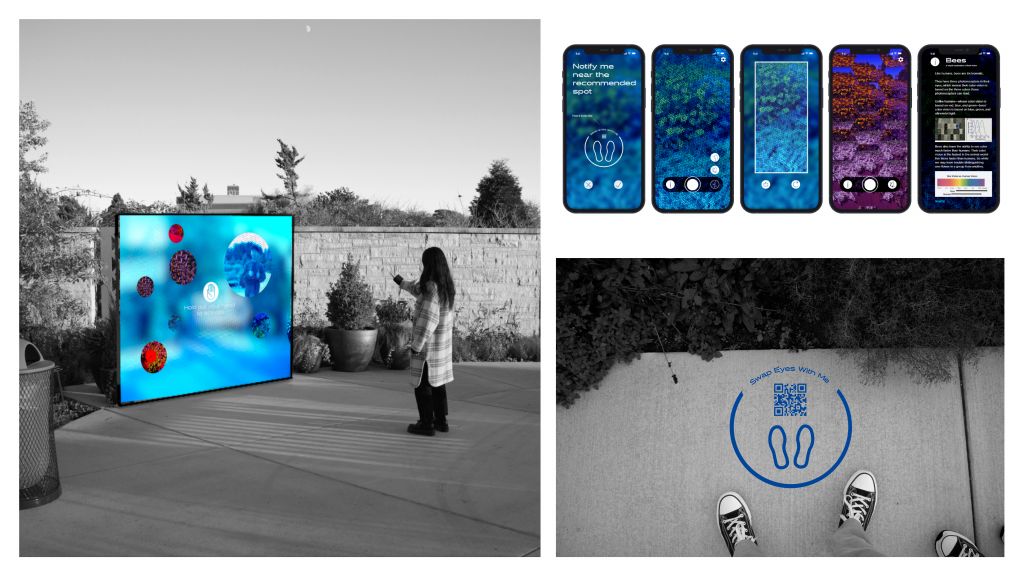
William Ren & Erin Nguyen
Humans and pollinators have very different visual systems, and see different wavelengths of light. Thus, when humans plant a garden of flowers to attract pollinators, the pollinators see something very different from what the human sees. To give visitors a sense of the hidden world in the Arboretum, we created a large interactive display that allows visitors to see the surroundings as they appear to the pollinators. After this, visitors can download a program on their phones to continue exploring. Using augmented reality, they can change the photos on their cameras to view the garden “through the eyes” of different pollinator species, and also obtain more information about pollinator visual systems. Throughout the garden, specific regions will be recommended where the flowering plant colors will provide the most dramatic experience.
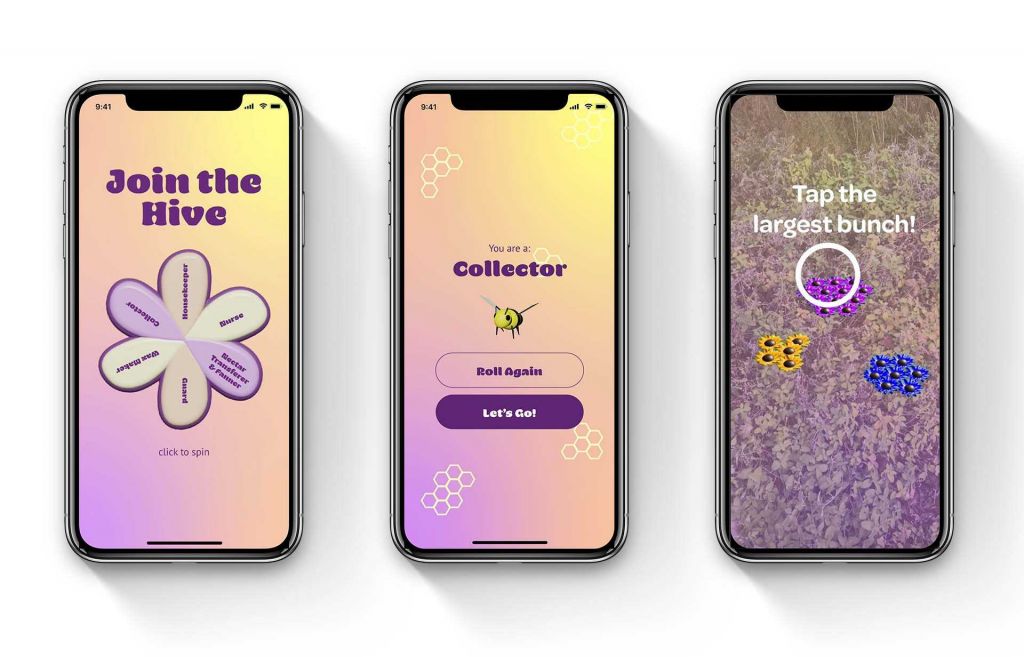
Mikayla Peles & Kira Lorraine
Hive Life is an augmented reality (AR) phone game built around Penn State’s Arboretum, designed to be a supplement that engages users while also educating them about the hidden world of its pollinator garden. It uses a funky otherworldly aesthetic and 3D models to create an experience that allows users to more easily embody the role of a bee. The game assigns players specific roles based on the actual jobs that worker bees have through their lifetimes and then prompts you to complete 4 AR mini games that are triggered by walking through the garden. Each of these mini games prompt the players to use their phone camera to look around and quickly follow the on-screen instruction, earning points for how quickly they complete it.